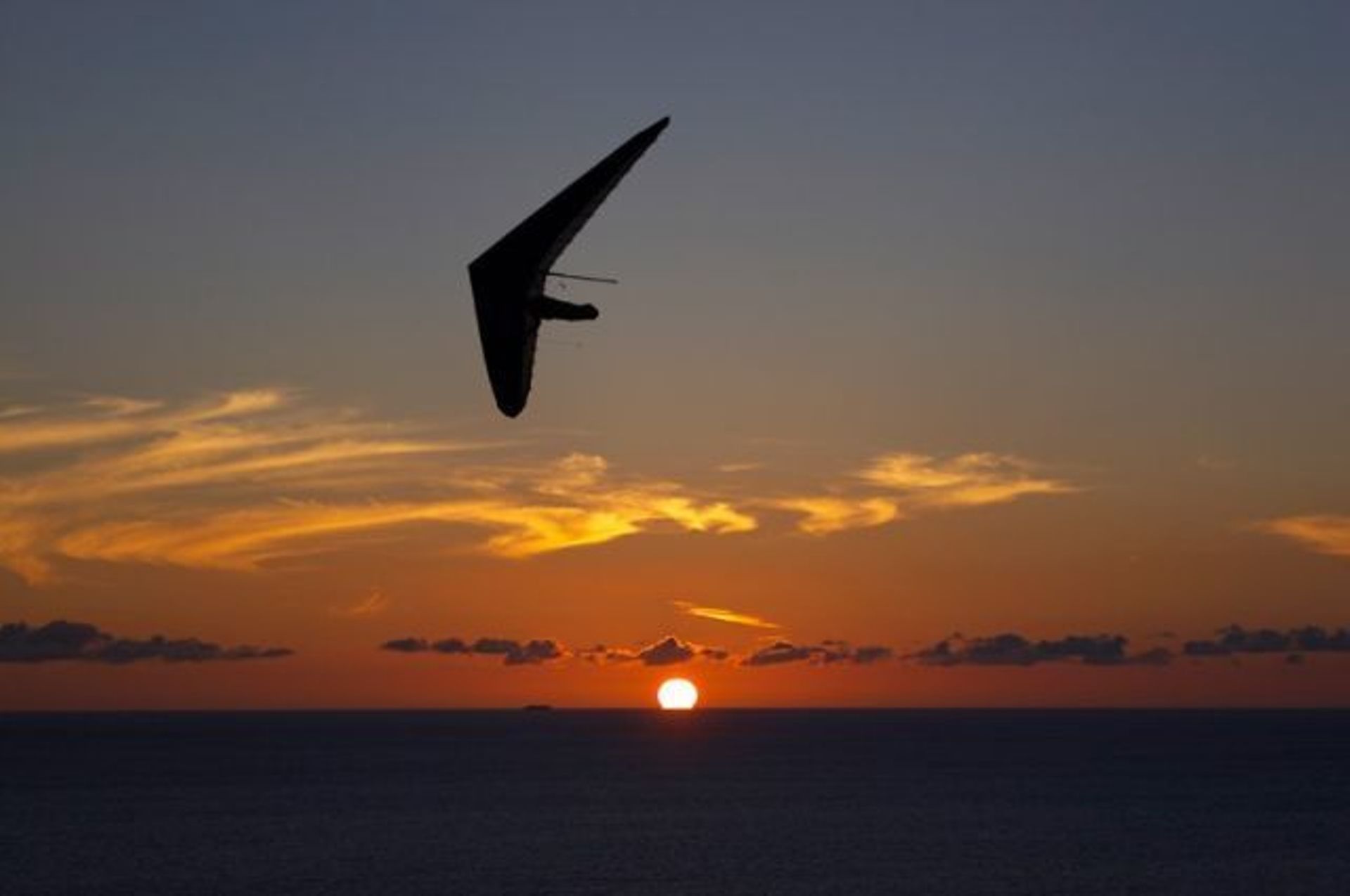
- How do you get in the air?
- A hang glider can be foot launched from
a hill or cliff, or towed behind an ultra light airplane, truck or boat.
They can also be winch launched.
- How high can you go?
- Most flights remain below 1350 - 1800
meters (4000 - 6,000 feet). In the USA the legal, regulatory limitation
is 17,999 ft above mean sea level (MSL). Above about 3,000 - 4000 meters
(9,800 - 13,000 feet) you will need oxygen.
- How long can you stay up?
- An intermediate pilot can soar for
several hours. Hang Gliders remain aloft by using ridge lift (rising air
deflected by a mountain) or thermals (rising air created by the sun
warming the earth). An advanced pilot may choose to fly cross-country (XC)
and fly many miles to "land out."
- Cross-country (XC) records are often
hundreds of miles, and the world record for soaring is over 24 hours!
- How do you control the glider? Is it
difficult?
- Hang Gliders are controlled by "weight
shift" much like motorcycles, skis, or skates. It's not difficult, but
requires a learning period, much like balancing and riding a bicycle. It
will become second nature with practice. The key to controlling a hang
glider is not strength, but balance, endurance, and a light touch.
- What happens if you stall?
- A stall happens when the glider is not
moving fast enough to maintain lift and flight. A minor stall can make
the glider difficult to control, while a full stall can result in a loss
of 15-100 feet (or more) of altitude. Stalls are not as dangerous at
high altitudes, and are often a good teaching tool, and loads of fun.
Stalls are dangerous when the glider is near the ground, since losing
altitude can cause the glider to crash. When landing a hang glider,
always maintain your speed.
- What if you fall?
- The hang glider pilot is tethered to
their glider by a strap capable of holding over 10 times the person's
weight. Falling out of the glider is not likely. Gliders themselves do
not fall unless they suffer structural damage, or are not properly
assembled. Glider damage is caused by improper glider maintenance, or
performing aerobatic stunts that over stress the glider. Hang Gliders
are very sturdy, usually composed of aircraft aluminum.
- How much does it cost?
- Lessons: $70 to $140 per lesson,
including equipment rentals
- Gliders
- Used
- Older gliders as cheap as $300,
are not recommended since they are difficult to fly or repair
- Quality used gliders start
around $1500
- New
- Beginner gliders start at $3000
- Intermediate gliders start at
$4000 and run up to nearly $10,000
- Equipment: Helmet, harness, etc. will
run another $500 to start
- Never buy any hang gliding equipment
without first consulting with an instructor!
- Do I need any kind of rating or
certification?
- Hang Gliding is a self-regulated sport,
so no official certifications are required by law to own or operate a
hang glider. However, most launch sites and landing zones appropriate
for hang gliding require a certification by the United States Hang
Gliding and Paragliding Association (USHPA). Failure to follow site
guidelines can result in sites being shut down, angry pilots, and legal
action. Always check site guidelines before flying.
- The USHPA has pilot
proficiency system that consists of 5 levels, Hang-1 through Hang-5.
Certified USHPA instructors can witness your flight, administer a short
written test, and provide you with a rating. Filing fees are $15, and
provide a pilot with instant insurance and international recognition of
their skills. Here is a brief summary of each rating:
- Hang-1: Beginner
- The pilot can safely
setup/breakdown a glider and perform straight and level flight
at varying airspeeds.
- This allows the pilot to fly
training hills without an instructor.
- Hang-2: Novice
- The pilot can control the
glider in turns and has more advanced launch and landing skills
in a variety of flying conditions.
- This allows the pilot to fly
most mountain sites and tow parks, under supervision by an
observer.
- Hang-3: Intermediate
- The pilot has 10 hours of air
time, understands right-of-way rules, wind and site conditions,
spot landings & approaches.
- This allows the pilot to fly
nearly all mountain sites and tow parks.
- Hang-4: Advanced
- Must have significant
experience with extended flights and thermals at a variety of
intermediate sites.
- The pilot has years of
experience and their mentoring skills allow them to be an
observer.
- Hang-5: Master
- Pilot is probably a competition
pilot, with tandem flights, cross-country flights, and all
special skills sign-offs.
- The pilot is likely an
instructor with a decade of experience.
- Where can I go to try hang gliding?
- Once a pilot, where can I fly hang
gliders?
- Technically you can fly a hang glider
anywhere except where you are explicitly not allowed, such as National
Parks and Forests (Yosemite being an exception). BLM generally allows
hang gliding on its land. You should of course get permission on any
private land you wish to fly on. You will fly under FAR Part 103 which
prevents you from flying in controlled airspace and over congested
areas. The majority of hang gliding occurs at well established club
sites.

